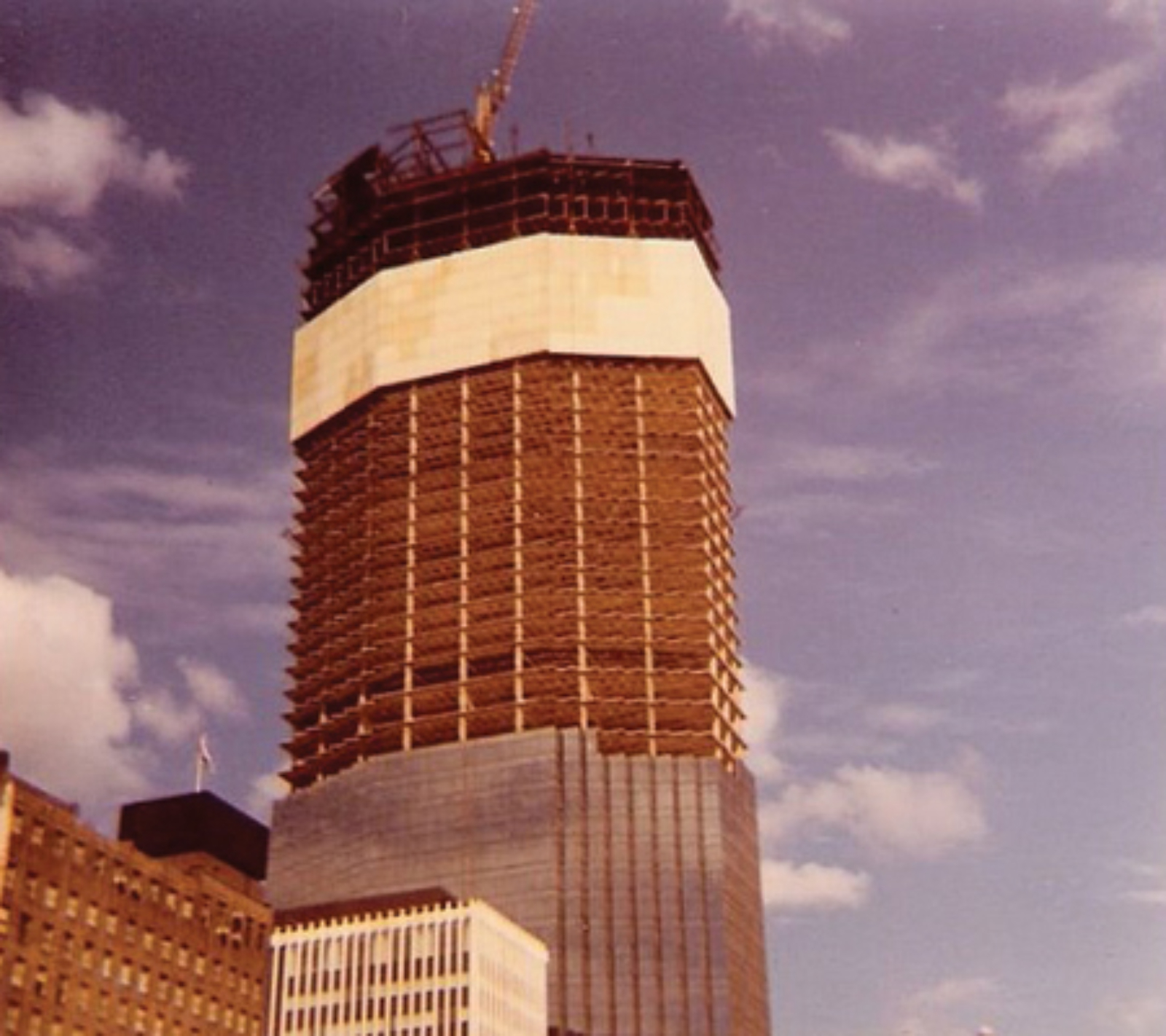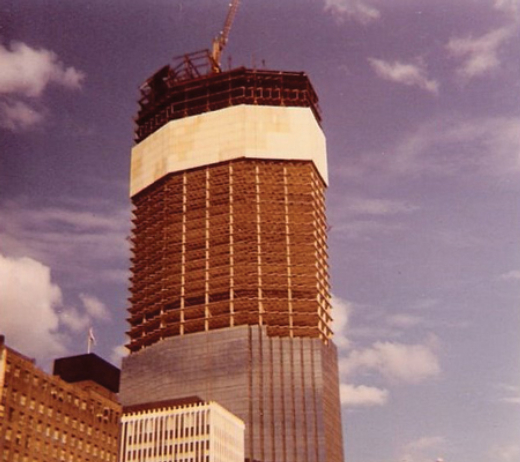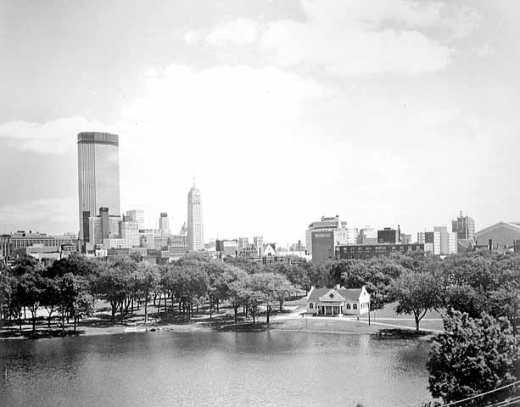A series of fortunate events in the late 1960s lead Investors Diversified Services (IDS), Inc. to commission architect Philip Johnson to create a new interpretation of the glass skyscraper to serve as the company’s headquarters. The result is a property (we always say that IDS Center is more than just a building!) that has become a symbol of the region, but is also a story where persistent and thoughtful maintenance has sustained the iconic curtain wall.
IDS Center, Minneapolis
Author
Todd Grover
Affiliation
Docomomo US Board of Directors and Docomomo US/Minnesota
Tags
With the IDS Center, Johnson, who had grown tired of the mirrored glass-box towers typical of East Coast cities, turned his full attention to this design, calling the opportunity “an architect’s dream”. In his own work he was transitioning from the formal orthodoxies of the International Style—which he had long championed - to a more expressive application of Modern design elements. At IDS, Johnson experimented with this new curtain wall expression by modifying the typical flush design of the window mullions to have them project from the face of the glass. These deep mullions then divided smaller panes of glass (30 inches wide instead of the typical 60 inches), creating what Johnson described as a “network of lines—more the aspect of a birdcage than of a glass box.” For the glass, Johnson tested a range of types and colors before choosing a cobalt glass with a 20 percent daylight transmittance, allowing the highest amount of daylight to enter the building while still having a reflectivity that produced an abundance of shifting light on the building’s tower’s surface.
Johnson also broke from the standard-issue box skyscraper, articulating the curtain wall at the corners, creating steps—which he called “zogs”—where the deep horizontal lines of the mullions intersect at 90 degrees. The corner creates a fractured array of reflections and lends a scale to the building through subtle angularity, and has the added benefit of producing 32 corner offices per floor. In addition to the aesthetic contrast to the typical curtain wall, Johnson’s heavier-than-usual vertical mullions were also meant to serve as a support for custom window washing rigs. This heft has benefited the curtain wall to better withstand the winds and temperature changes of Minnesota’s climate. This simple move may be the major reason why recent wind-load and leakage tests revealed that the IDS curtain wall is performing extremely well. These and other refined, but expressive design elements became the coalescence of ideas in the creation of the IDS Center, to which Johnson exclaimed, “I think it is our best building.” (The Philip Johnson Tapes, 177).
This status, thankfully, did not fall on deaf ears. For years the owners of the IDS Center recognized that they possessed something special. They, along with their management team, have taken very good care of the property that Johnson created. Notes Accesso Services LLC operations manager Thom Cowhey, who started working at the IDS Center six months after it opened: “I’ve always been told by all of the contractors who worked on the building that this curtain wall is exceptional compared to some of the curtain walls in newer buildings.” Not that the curtain wall doesn’t require its fair share of monitoring and repair. The system has to endure extreme temperature swings in the Minnesota climate. Glass breaks and seals fail, and when they do the windows have to be replaced. In fact, the glass at IDS is in a constant, albeit incremental, state of replacement. “We replace roughly 50 to 70 pieces of glass every year,” says Deb Kolar, general manager of operations, who’s been with the management office for 20 years. To ensure uniform appearance and quality, the Accesso team places large orders, anticipating need. “The manufacturer [makes the glass] twice a year, and when they do we place our order.”
One staggering exception to this steady rate of attrition was caused by a violent storm on June 19, 1979. Cowhey was working that night, and from the top floor he could see an approaching “black curtain” punctuated by “bright blue explosions” as trees downed power lines and transformers overloaded across the city. Winds tore through the Crystal Court and the curtain wall of the tower was battered with pea-gravel ballast from the roof of a nearby building. “It looked like somebody had machine-gunned the mid-section of the building on the south side,” says Cowhey.
At the time, the original glass manufacturer, Libbey-Owens-Ford, was able to provide matching panes, but a few years later the company stopped production of the glass. In the early 1980s, the management team sought out other manufacturers, but none could accurately reproduce the panels. (A close examination of the building today reveals that some panes from this era have a slightly amber tone that differs from the original blue.) Fortunately, IDS management eventually established relationships with glass manufacturer Viracon out of Owatonna, Minnesota, and distributor Brin Northwestern Glass; Viracon was able to replicate the color, light transmittance, and reflectivity of the glass specified in Johnson’s original design.
Even mundane operations are not taken for granted, for example, window cleaning is more than just housekeeping—it’s a big part of maintaining the specialized construction of the curtain wall. “By diligently removing the grit from the windows,” says Kolar, “the weep system of the building does not clog.” This task is so critical that the IDS Center recently purchased a second window-washing rig to increase the frequency of cleaning.
In contrast, the most vulnerable part of the system may be the wet sealant. “Part of the puzzle of doing anything with the curtain wall is to make sure you’re caulking the right locations,” says Cowhey. “We do. We will be doing some caulking in the future. That’s a part of the process.” But larger repairs like a few isolated issues with the weep drainage system of the curtain wall are sometimes difficult to plan. “We are learning that they put this building together like a puzzle, in a sequence,” says Cowhey. “They started at one point and worked their way around; it may have been built in sequence and you’re not going to be able to get it back the way it was.” Because of this assembly process, which is still being understood, the successful repair for these weeps may require a more involved project. To this end, they are being very methodical and purposeful in approaching the repair needs of this curtain wall, and it shows.
About the Author
Todd Grover, AIA is a Principal and Partner with MacDonald & Mack Architects. For nearly forty years, MacDonald & Mack has been at the forefront of the preservation movement, both locally and nationally, recognized as a leader and innovator in the field. MacDonald & Mack was named the 2011/2012 AIA Minnesota Firm of the Year, with the selection committee praising them as “the gold standard in historic preservation.” Mr. Grover is on the Docomomo US Board of Directors and is an Adjunct Assistant Professor at the University of Minnesota teaching courses related to the documentation and conservation of historic resources.



